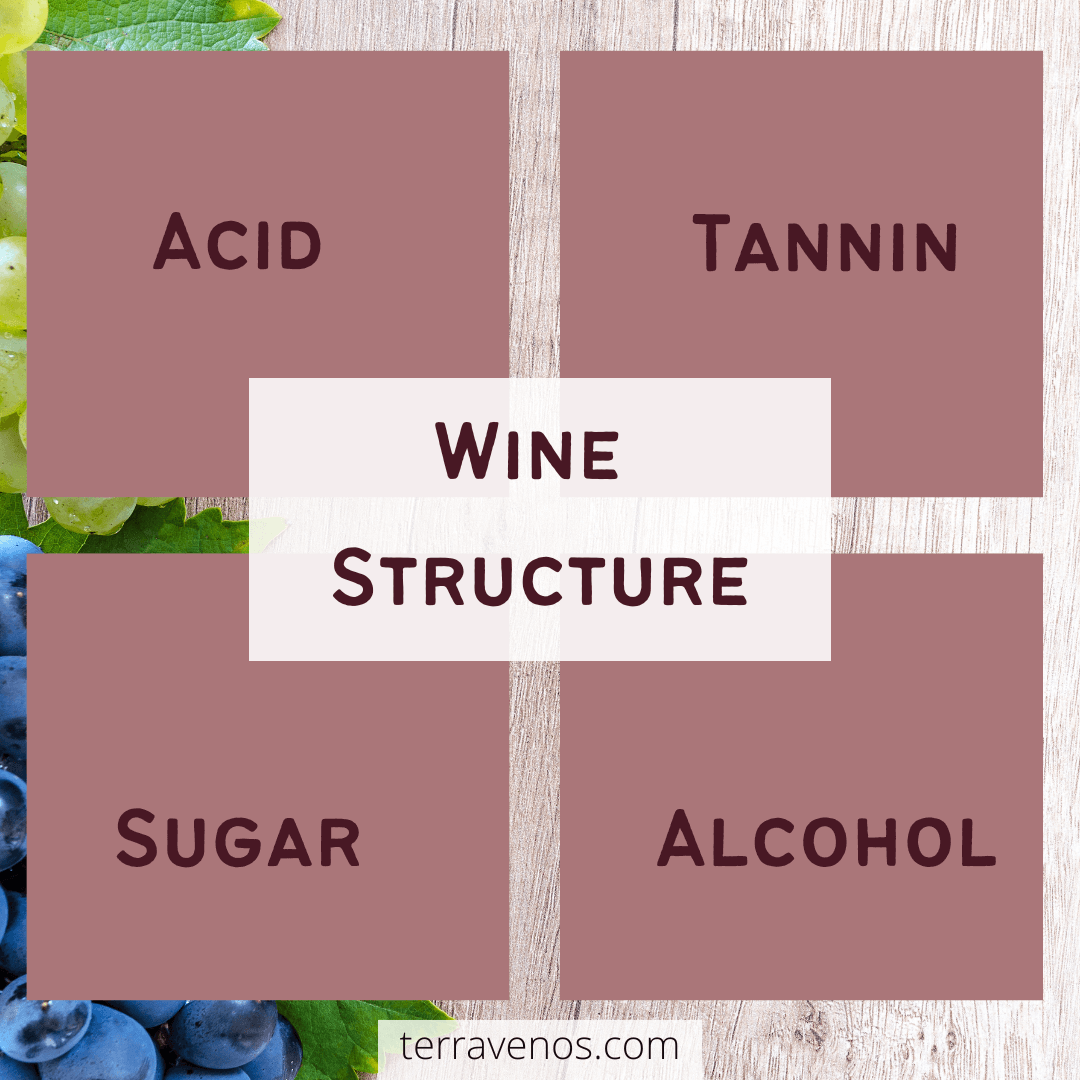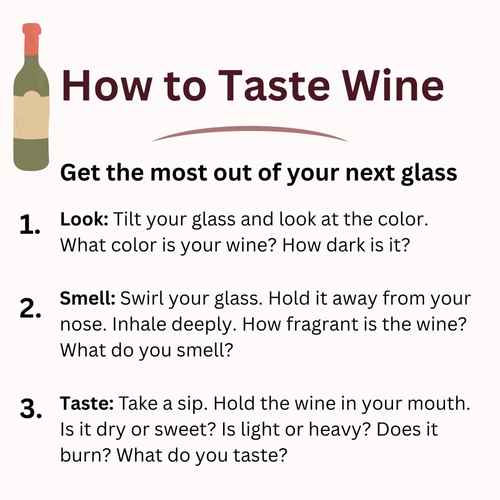
What Is Wine Structure?
The structural components are those parts of the wine that contribute to the overall sensorial experience of wine, but that aren’t considered flavor or aroma compounds.
Essentially: A wine’s structure is everything minus the fruit and spice.
A wine’s structural components include:
- acid
- tannin
- alcohol
- sugar
What Do the Different Structural Elements Add to Wine?
Glad you asked!
Wine Structure: Acid
Acid brightens fruit flavors, lifting the wine up. Acid makes your mouth water, just like when you take a bite of a lemon. This increases your perception of a wine’s juiciness (read more about acid here).
Wine Structure: Tannin
Tannin adds astringency and even a little bitterness to the wine depending on where the tannin comes from. Tannins dry the mouth out because they bind with proteins in your saliva. High-tannin wines are often referred to as ‘firm’ – a warning that you’ll want to be drinking the wine with food. Wines with the softest of tannins may only be felt on the top of the tongue.
Wine Structure: Alcohol
Alcohol creates a tactile burning sensation in the mouth and throat. The higher the alcohol level in a wine, the greater the burn. Alcohol also increases perceptions of fruitiness thanks to its low evaporation point, carrying aroma molecules into our nasal passages that they lift out of the glass. Alcohol also adds body. Low alcohol wines will seem lighter in body when tasted side-by-side with high alcohol wines.
Wine Structure: Sugar
Sugar imparts sweetness to wine and also body. A wine with more than 1 g/L of residual sugar is considered to have some sweetness.
Jargon Alert: Residual sugar refers to any unfermented grape sugars left in (or added to) the wine after fermentation, giving the wine sweetness. Wines can have a little residual sugar and be off-dry, or a lot of residual sugar, and be a dessert wine (e.g., port).
Wine sweetness can be confused with glycerol, a byproduct of fermentation. Fruity wines may also come across as sweet, even if they are technically dry wines.
Why Do You Analyze Wine Structure?
The main goal of guided winetasting classes is to teach you how to break down a wine’s structure. If you know how to deconstruct a wine, then you can assess each part of the wine independently and then decide how well they fit together to form what’s in your glass.
This skill gives you the ability to make a quality judgment:
You want to know: Just how good is the wine?
How Do You Taste the Different Wine Components?

Tasting the same wine with doctored levels of acid, tannin, alcohol, and sugar helps train you to identify the different structural components in wine.
Easy. You find a simple, basic wine and manipulate it to increase the different levels of each element.
Tasting a high acid wine next to that same wine with a more restrained acid level acts as an exercise to compare and contrast.
You can then take these skills and apply them to your favorite vinos.
You get to subjectively decide: Is your wine any good?
Exercise: How to Assess Wine Structure

Of course, the challenge is that most everyday wine lovers don’t have access to the chemicals required to doctor wines.
However, you can experiment with wines that have diverse structural profiles to help you learn the spectrum of differences.
Here’s a recommended list of wines you can try side-by-side to taste structural differences in wine:
- Acid: Picpoul or Albarino (high acid wines) compared to a Viognier (low acid wine)
- Tannin: Tannat or Cabernet Sauvignon (high tannin wines) compared to a Beaujolais Nouveau or entry level Beaujolais (low tannin wine)
- Alcohol: Vinho Verde under 10% ABV (low alcohol wine) compared to a dry Riesling over 13% ABV
- Sugar: White Zinfandel compared to a rosé from Provence, France
The ability to tease out the different levels of each structural component gives the taster clues as to the wine’s grape variety, origin, and even winemaker.
It also helps you assess if a wine is balanced and of the expected quality for the price that you’re paying.
More than that, breaking down a wine’s structure compels us to think more deeply about what gives each wine its unique story.
Thirsty for More?
Here’s how to taste wine tannins, specifically.
Check out how to do a side-by-side wine tasting that’s just acid and tannin here.




